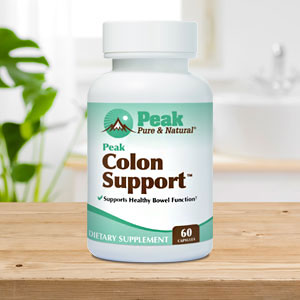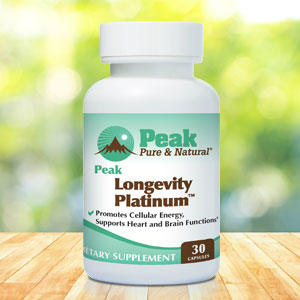Get Easy Health Digest™ in your inbox and don’t miss a thing when you subscribe today. Plus, get the free bonus report, Mother Nature’s Tips, Tricks and Remedies for Cholesterol, Blood Pressure & Blood Sugar as my way of saying welcome to the community!
Chelation: The heart therapy your doctor won’t discuss

I’m sure you’ve heard the old saying, “There’s more than one way to skin a cat…”
I love cats, so I don’t even want to think of why that saying exists, but we use it a lot because we understand the meaning behind it.
In almost any situation, there is usually more than one way to do something — and do it right. But when it comes to medicine, there’s quite a bit of discrimination in that respect.
EDTA chelation therapy is a perfect example…
What is EDTA chelation?
Unless you have been interested in alternative medicine for a while, you may have never heard of EDTA chelation therapy. So, let me start you out with the basics…
Ethylenediamine tetra-acetic acid (EDTA) is a molecule that was originally used effectively to remove metals from the bloodstream and flush them out through the urine. It was then believed to pull off calcium from the deposits of atherosclerotic plaque and flush them out the urine. Now it is also thought that EDTA pulls out lead and cadmium that damage blood vessels.
In 1953 Dr. Norman Clarke, Sr. and associates began using EDTA chelation with the aim to reduce coronary heart disease. By 1956, they had treated 20 patients who were suffering from chest pain. Out of the 20 patients, 19 had “remarkable” improvement in symptoms. More and more studies followed (see below), which led to the formation of the American Academy for Advancement in Medicine (ACAM) which currently trains physicians in IV chelation.
EDTA chelation has been found to reverse atherosclerosis, improve blood flow to small vessels and allow them to be more elastic. Yet this therapy is still fiercely challenged due to a lack of proof by blinded placebo-controlled clinical trials, despite the vast amount of other studies and improvements seen in office settings.
According to data from a federal survey, 66,000 people received chelation therapy for all purposes (not just for heart disease) in 2002… and grew in popularity because 111,000 received it in 2007. It’s popular, obviously, but there’s a reason you aren’t hearing about it…
Mainstream medicine’s double standard
First, understand the bias for high-cost mainstream medicine, which treats illness after it’s manifested. According to the Office of Technology Assessment and an advisory board of eminent university faculty members, “… only 10 to 20 percent of all procedures currently used in medical practice have been shown to be efficacious by controlled trial.”
Moreover, according to a 1988 Journal of the American Medical Association (JAMA), 44 percent of all coronary artery bypass surgery was being done for inappropriate reasons. Therefore, if you purport that EDTA chelation therapy cannot be recommended because it is not proven — you now understand the double standard.
The early studies
- A 1988 retrospective study of 2,870 patients showed overall that 89 percent got good or marked improvement in cardiovascular disease symptoms, including ischemic heart disease, intermittent claudication, cerebrovascular disease and even scleroderma.
- In 1993 two well-respected Danish doctors, Hancke and Flytlie, measured 90 percent improvement in several different criteria among 265 patients with documented coronary artery disease who were followed for six years after receiving chelation therapy.
- In 1994 researchers L. Terry Chappell, MD and John P. Stahl, Ph.D. performed a meta-analysis of currently available studies using EDTA chelation therapy for cardiovascular disease. In their search, they identified 40 articles on the subject. Of the nineteen studies which met their criteria for a valid study, there were 22,765 patients included. Their analysis revealed that on average there was an 88 percent positive relationship between EDTA therapy and improved cardiovascular function as demonstrated by clinical improvement and also by objective before-and-after testing. Additionally, they collected unpublished “file drawer” data from 32 clinicians who utilize intravenous EDTA and found improvement in 1086 of the 1241 patients (88 percent).
- The bulk of the reported clinical outcomes and studies are excluded from the online peer-reviewed scientific data of mainstream medicine (National Library of Congress you will find at pubmed.com) likely because of its potential economic threat to the current standard of care. Only 10 percent of the world’s total biomedical literature can be found in those databases.
- It is reported that EDTA chelation therapy has been given to more than 1 million Americans and 3 million patients in Canada, Europe, Australia and South America.
Recent research
With debate going on for decades, the NIH finally sponsored the Trial to Assess Chelation (TACT) which was conducted from 2002 to 2011 in 134 sites in the United States and Canada. There was a total of 1,708 patients studied, all of whom had experienced a heart attack; 83 percent had previously had bypass surgery, a stent implanted, or balloon angioplasty.
The summary of that study was quite impressive for those with diabetes. The summary states, “Patients with diabetes, who made up approximately one-third of the TACT participants, had a 41 percent overall reduction in the risk of any cardiovascular event; a 40 percent reduction in the risk of death from heart disease, nonfatal stroke, or nonfatal heart attack; a 52 percent reduction in recurrent heart attacks; and a 43 percent reduction in death from any cause.”
The TACT trial showed only a modest improvement for heart disease patients without diabetes. However, to settle the question further, the NIH recently announced they will be conducting the TACT2 trial soon, under the direction of Gervasio A. Lamas, M.D., who was also the lead author of the TACT trial, chief of Columbia University Division of Cardiology at Mount Sinai Medical Center in Miami Beach, FL.
Editor’s note: There are perfectly safe and natural ways to decrease your risk of blood clots including the 25-cent vitamin, the nutrient that acts as a natural blood thinner and the powerful herb that helps clear plaque. To discover these and other secrets of long-lived hearts, click here for Hushed Up Natural Heart Cures and Common Misconceptions of Popular Heart Treatments!
Sources:
Clarke NE, Clarke CN, Mosher RE. Treatment of angina pectoris with disodium ethylene diamine tetraacetic acid. — Am J Med Sci. 1956;232:654-666.
For daring to study a discredited therapy, this doctor earned scorn — and a $37 million grant — STAT
Assessing the Efficacy and Safety of Medical Technologies. — Washington, DC, Congress of the United States, Office of Technology Assessment, Publication No. 052003-00593-0. Government Printing Office, Washington, DC, 20402, 1978.
Winslow CM, Kosecoff JB, Chassin M, et al: The appropriateness of performing coronary artery bypass surgery. — JAMA 1988;260:505-509.
Journal of Advancement in Medicine, Volume 2, Numbers 1/2, Spring/Summer 1989
Hancke C, Flytlie K. Benefits of EDTA chelation therapy on atherosclerosis: A retrospective study of 470 patients. — Journal of Advancement in Medicine. 1993;6(3):161-171.
Journal of Advancement in Medicine Volume 7, Number 3, Fall 1994
Cranton EM: Limitations of the Index Medicus and Medline computer program. — J Holistic Med 1982;4(2):103-104.
Chelation for Coronary Heart Disease — National Center for Complementary and Integrative Health (NCCIH)















